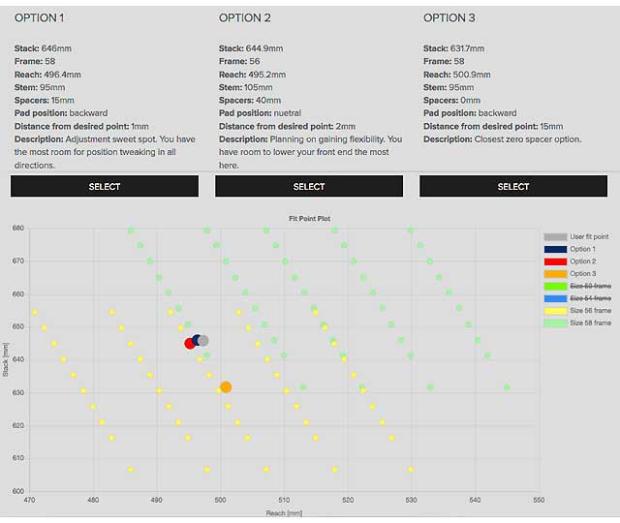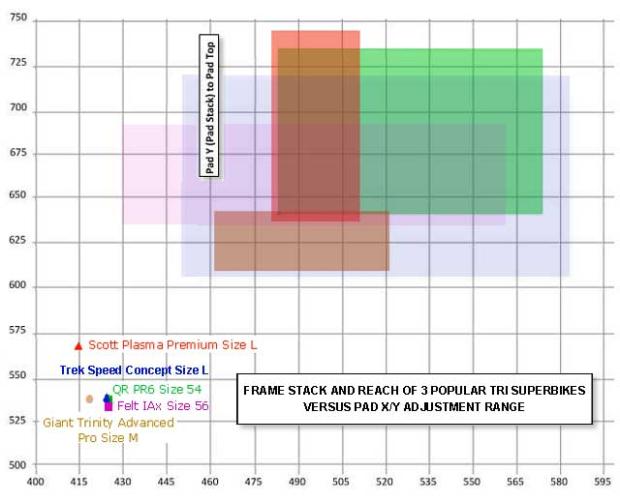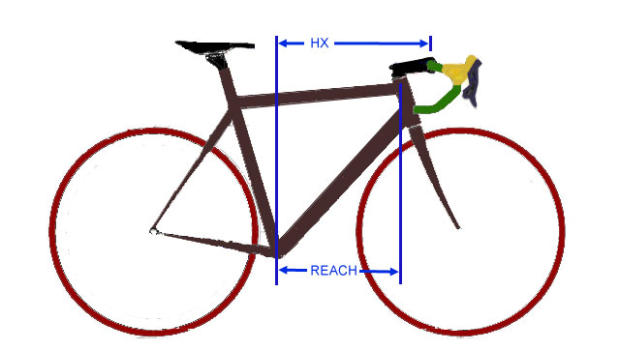Orthodoxy
The North American racing season, on fumes by mid-November, officially flamed out this weekend. Now what? Don't call it the off-season! If you're like me this is the time we spend trying to shore up a weakness.
We'll host two of our typical annual "Challenges" upcoming, the 100/100 Run Challenge and the Guppy Challenge, and you'll be reading about these this week. Indoor training is off to a rolling start (and we've got some pretty neat Slowtwitch group options for indoor training soon to be announced). Also, maybe this is the time you decide to fix your bike position in preparation for getting a new bike, or becoming once and for all the cyclist you aspire to be.
Perhaps that's what the fellow thought who, this morning, posted this question on his bike fit.
What do the Guppy Challenge, the 100/100, and a new bike fit have in common? Mind if I upset some folks?
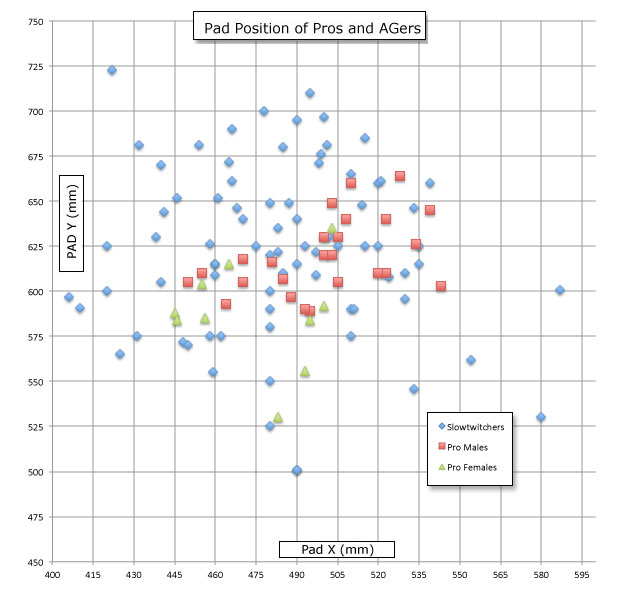
Let's take the case of the person with the bike fit question. He was positioned, apparently, by a Retül fitter, because he shared his (Retül) fit report. I have some sympathy for the folks at Retül because they, like I, teach a bike fit school, and Lord knows some fitters leave our schools and appear to disregard entirely what we say. I could just as easily use a fitter I trained in the following object lesson.
The guiding ethic that sits like an umbrella over everything we teach and do at our F.I.S.T. Bike Fit Workshops is orthodoxy. Orthodoxy simply means adherence to a historic consensus. Not only is orthodoxy is guiding principle for bike fit, it is for just about everything I care about. You too. And your bike fitter too. Except when he engages in bike fit. Then he forgets about the important of orthodoxy because, frankly, your bike position doesn't hit a threshold of urgency for him. (And I don't mean this fitter, in the case of the person asking about his bike fit today; I know nothing about how that fit session went. But I am talking about a lot of bike fitters, and I'll explain how I dare make this outrageous statement.)
If you, your bike fitter, your congressman, had a dreaded disease you'd damned well sure care about orthodoxy. If your doctor place red, yellow and green pills in front of you and asked you to choose your favorite color, you'd certainly ask, "But which is proven to work?!" What you want is evidence that one pill works better than the rest, most of the time, for most people. You're looking for a consensus that forms around the question of which pill is most efficacious.
Gravity is pulling toward the orthodox, and away from the unorthodox. Science and medicine adheres to the same guiding ethic. So does engineering. Agriculture. Accounting. Law. Just about everything you hold dear in your life. Books exist to pass on historic norms, otherwise we couldn't learn from those who came before us. Orthodoxy means identifying patterns that yield success, and contrasting them from behaviors that don't.
If you understand what I'm writing here, and you use it to guide you in all elements of your sport, things will get much simpler and easier; decisions will be clear; the tools you use to chart your course will be evident.
See that graph above? Slowtwitchers have seen it before. This is the Cartesian representation of where your armrests sit in space above and in front of your bike's bottom bracket. It's Pad Stack & Reach, or Pad X and Y, however you want to say it (to pad center). All those blue triangles, that's you. Slowtwitchers. The red squares? Those are pro male triathletes. What you should expect to see is a slope, because as a rider is taller his armrests sit higher and further in front of the BB. I think you can see how those red squares roughly adhere to that idea of a slope. Do the rest of you conform to that slope? Not so much. What does that mean? There is a much tighter adherence to orthodoxy among pros than among age groupers. You, and your bike fitters, don't care so much about orthodoxy when it comes to your own fit. But you should.
Everybody is different?
What we hear all the time is the phrase, "Everybody's different." From a taxonomic and medical perspective, however, it's the opposite. Saying "Everybody's identical" is a much truer statement. What we have are micro differences, but macro samenesses. Back to that chart above, not every pro sits on a line. They exist in a band, where deviation from a strict line is observed. Why? Maybe the line is wrong. It exists in flux, and changes as more data comes in. Further, the armrests of those with longer legs and shorter torsos will sit higher versus a given length, and vice versa.
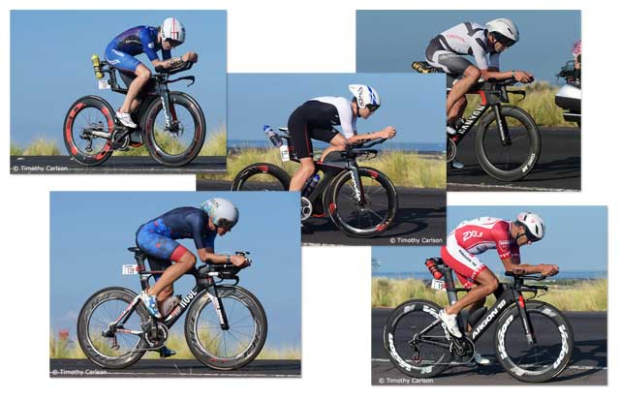
Just, if you look at the images above, do you see tendencies? Does anything look similar about their positions? Those things that are similar are observed "samenesses" that, when we see the same posture or behavior enough times, this suggests a consensus among those who do things well. Typically this is what's taught, unless there's a good reason not to teach it.
Orthodoxy Among All Users
A golf pro teaches the golf swing exhibited by the best players, to the degree there is a consensus among the best players. Same with your tennis pro. Same with your child's little league coach. What they teach is orthodoxy, though they might not describe what they teach using that word. But should orthodoxy always mean the consensus technique or posture exhibited by the best exemplars of sport?
Yes, usually, in my opinion. As a coach or bike fitter I need to satisfy myself as to why you can't do the sport the way the best do it; otherwise, maybe not in volume, but in detuned to suit your abilities, your best play is to emulate the best-in-class.
Still, some endeavors require a level of athleticism that exceeds the abilities of mass participants, or it requires the sort of special talent and training that only a determined single-sporter can master. Examples: really good shot putters (even world class decathletes often look like a high school freshman when putting the shot); and time trialists who master the ability to ride with elbows so narrow they just about touch each other, versus triathletes who just don't or can't ride like that.
In that latter case, "consensus" for a triathlete means something else than consensus for a time trialist even if they're doing almost the same activity on the same equipment.
I see little evidence that age groupers should do something fundamentally different than pros just because pros are pros, and we aren't. What I frequently hear from fitters in my workshops is, "But we don't fit pros, so our riders can't ride in those positions." My answer? "You have it backwards. It's the pros who can't ride in the positions your age groupers ride in. No way could a pro ride 400 miles a week in a position that uncomfortable."
It's axiomatic that a pro triathlete is riding in a comfortable, powerful position. In my experience, taking those "blue triangles" above and refitting those riders so that they're in that red square band generates more, not less, comfort and power for the age group rider.
Measuring Consensus
In the case of the Retül fit above, the whole point of motion capture, with angles measured, is to make sure the body forms the angles most often seen among good riders. What we see from that rider's Retül fit report is that he has a saddle height of 83cm or so, and an elevation drop from saddle to armrest (in the vertical plane) of about 4.5cm. I pretty much promise you this yields a hip angle not inside anyone's reasonable range if the ranges are tight enough to mean anything.
Once these angular ranges are so wide; or so widely ignored; they mean nothing. You can harness a cyclist up to an expensive motion capture system and it won't mean a tinkers dam. Why have ranges for cholesterol or blood pressure if your doctor doesn't pay attention to them, or if those ranges are so expansive they cease to describe a consensus among healthy people? What guide toward health can you hold onto if "everybody's different"? Certainly it's wrong to try to force the idea of orthodoxy if no consensus can be found. But that's no excuse for the failure to adhere to orthodoxy because you choose to ignore the consensus clearly there to see.
There is a lot more I could write about this, but we're already heading into tl;dr territory. Yes, there are those whose unique and brilliant insight cause them to change a paradigm of sport. But, as a coach, or a fitter, are you Bill Koch? Dick Fosbury? Aaron Piersol? Because you're betting a longshot with those who pay you money if you're somehow right when everyone else is wrong.
Back to those fitters who I accused of not taking their craft seriously. It's funny how urgently some life events focus the mind. We have the luxury of dismissing the consensus of experts in politics or culture, or in our own vocations, if we can get away with it. The luxury of unorthodox thinking vanishes when the shite gets brown. The trick is to just adopt orthodoxy as a general behavioral standard. I am a humble bike fitter and I don't mean that facetiously; I value the virtue of humility in a bike fitter. Crowdsourcing the data of tens of thousands of great cyclists generates a consensus I'm not so arrogant as to disregard. When I fit you I assume you aspire to that consensus position, and I fight to grant you that, unless it's just not in the cards.
Your bike fitter should do the same. If he or she does not grant you a position familiar and recognizable as that position good cyclists have chosen and continue to choose, where you're in that "red square" range, why? You deserve an explanation. Maybe there is one. Maybe there was one in the case of the person questioning his fit results this morning.
When orthodoxy is a guiding principle then it's not hard for any professional to tell you why you veer from the orthodox. More to the point, when orthodoxy is a guiding principle you rarely will veer from the orthodox. Now, as you head into the months when you're going to become a better swimmer, runner or cyclist, determine how to measure or identify orthodoxy in these endeavors. Then, demand an attachment to orthodoxy from anyone you hire; and craft in advance how you're going to ensure that's what you're getting.


